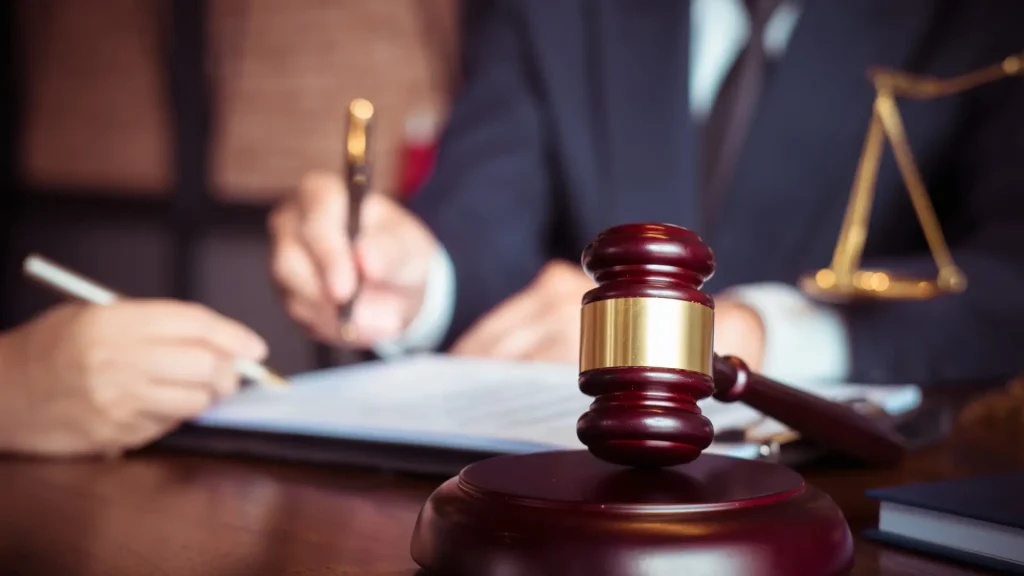 A personal injury case occurs when someone suffers harm due to another person’s negligent, reckless, or intentional actions. These cases establish a legal action framework for injured person to seek compensation for their losses. Most types of personal injury cases involve negligence, which happens when someone fails to exercise reasonable care in a way that leads to someone else’s injury. For instance, when a driver texts while driving and causes a collision, they’ve demonstrated negligence by failing to pay proper attention to the road.
A personal injury case occurs when someone suffers harm due to another person’s negligent, reckless, or intentional actions. These cases establish a legal action framework for injured person to seek compensation for their losses. Most types of personal injury cases involve negligence, which happens when someone fails to exercise reasonable care in a way that leads to someone else’s injury. For instance, when a driver texts while driving and causes a collision, they’ve demonstrated negligence by failing to pay proper attention to the road.
When negligence causes an injury, the victim may have grounds to seek compensation claims to resolve for medical bills, lost wages, pain and suffering, and other losses.
The Most Common Types of Personal Injury Cases
Understanding the most common personal injury cases can help determine whether you may be eligible to file a personal injury compensation claim and answer the question, What is a personal injury lawsuit?
Vehicle Accident Cases
Vehicle accidents are the most common source of personal injury cases in Indiana and throughout the United States.
- Car accidents account for millions of injuries nationwide each year, often resulting from distracted driving, speeding, or failure to follow traffic laws.
- Motorcycle accidents typically cause more severe injuries due to the rider’s limited protection compared to occupants of enclosed vehicles. When motorcyclists collide with larger vehicles, they frequently suffer broken bones, road rash, head trauma, and spinal injuries.
- Truck accidents involving commercial vehicles frequently lead to catastrophic injuries due to the immense size and weight disparities between trucks and passenger vehicles. These collisions often result in severe injuries requiring extensive medical treatment and rehabilitation.
- Pedestrian injury cases occur when vehicles strike people walking or standing near roadways. These accidents often result in serious injuries since pedestrians have no protection against the impact of a car.
Slip and Fall Injury Claims and Personal Injury Claims
Slip and fall accidents fall under premises liability injuries and occur when property owners fail to maintain safe conditions for visitors. These incidents commonly happen because of:
- Wet or slippery floors without proper warning signs
- Uneven walking surfaces, including broken sidewalks or loose flooring
- Poor lighting makes hazards difficult to see
- Unsafe staircases with missing handrails or broken steps
What makes these accidents particularly dangerous is their potential to cause serious injuries despite seeming relatively minor. A simple fall can result in broken bones, head trauma, and spinal injuries. Elderly individuals face exceptionally high risks, as a fall can lead to hip fractures that significantly reduce mobility and quality of life.
Medical Negligence Claims
Medical negligence occurs when healthcare providers fail to deliver care that meets professional standards, resulting in patient harm. These cases include:
- Misdiagnosis or delayed diagnosis, where conditions aren’t correctly identified
- Surgical errors involving mistakes during operations
- Medication mistakes from prescribing incorrect medications or dosages
- Birth injuries cause harm to infants or mothers during childbirth
Medical negligence claims require proving that the healthcare provider deviated from the standard of care and that this deviation directly caused harm to the patient.
Please read more about negligence here: Understanding Negligence
Workplace Injury Cases
Workplace injuries affect thousands of workers annually across various industries. While workers’ compensation reports cover many workplace injuries, sometimes third-party claims become necessary when someone other than the employer contributed to the accident. Common workplace injuries include:
- Falls from heights (particularly in construction)
- Equipment accidents involving machinery or tools
- Repetitive stress injuries from performing the same motion repeatedly
- Exposure to harmful substances, including chemicals or toxic materials
Defective Product Injury Cases
Product liability cases arise when dangerous or defective products cause injury to consumers or users. These claims generally involve one or more of the following elements:
- Design defects where the product’s original design is inherently unsafe
- Manufacturing defects that occur during production and affect only specific units
- Inadequate warnings occur when manufacturers fail to properly warn consumers about potential dangers
Products in these cases range widely from dangerous medications with undisclosed side effects to faulty vehicle parts that lead to accidents, or defective household items that cause fires or other injuries.
Dog Bite Claims
In Indiana, dog owners generally bear responsibility for injuries their pets cause. These attacks can result in physical injuries, including puncture wounds, lacerations, and infections, as well as emotional trauma that persists long after physical wounds have healed.
Less Common but Valid Personal Injury Case Types
 Some personal injury scenarios are less common, but they require dedicated legal assistance to build a strong case for compensation.
Some personal injury scenarios are less common, but they require dedicated legal assistance to build a strong case for compensation.
Wrongful Death Cases
When negligence leads to death, surviving family members may file wrongful death claims seeking justice and compensation. These cases help families recover funeral expenses, lost financial support, loss of companionship, and medical costs incurred before death. The emotional toll of losing a loved one due to someone else’s negligence makes these cases particularly challenging but necessary for families seeking closure and financial stability after an unexpected loss.
Catastrophic Injury Lawsuits
Severe injuries with long-term or permanent effects warrant special attention in personal injury law:
- Traumatic brain injuries affect cognitive and emotional function and may require lifelong care.
- Spinal cord injury claims often involve paralysis and substantial life adjustments.
- Burn injury lawsuits address severe burns requiring extensive treatment, skin grafts, and rehabilitation.
- Amputations permanently alter victims’ lives and their ability to work or perform daily activities.
These catastrophic injury cases typically involve higher compensation due to their lifelong impacts on victims’ health, independence, and earning capacity. They often require extensive medical evidence and expert testimony about future care needs.
Emotional Distress Claims
Although less visible than physical injuries, psychological harm can prove equally devastating. Emotional distress claims may arise from witnessing traumatic events, experiencing severe harassment, or being subjected to extreme negligence. While these claims often accompany physical injuries, they sometimes stand alone if an individual witnesses the experience or immediate aftermath of a close family member who has suffered a catastrophic injury or death.
Contact an Experienced Indiana Personal Injury Attorney
From common vehicle accidents to less frequent catastrophic injury lawsuits, the personal injury system provides pathways to compensation for those harmed by others’ actions. If you’ve experienced any of these situations, consulting with our team of personal injury attorneys can help you clarify your options. The team at Hankey Marks & Crider has over 80 years of combined experience handling personal injury in Indiana and disability cases throughout Indiana and the Midwest, and we work diligently to help clients receive the compensation they deserve. Call us today at (317) 634-8565 or contact us online for a free consultation.

